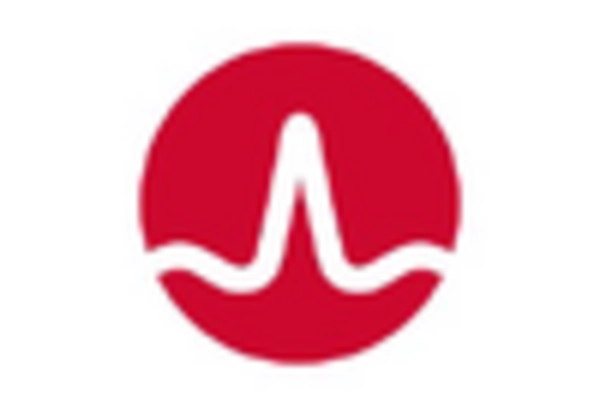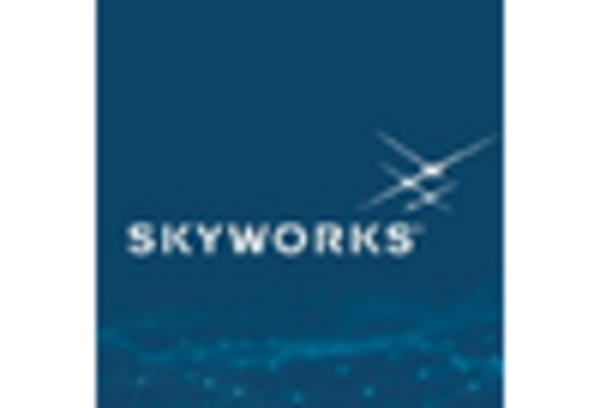Emergence of 5G Technology
The rollout of 5G technology is a pivotal driver for the Acoustic Wave Filter Market. 5G networks demand higher frequency bands and improved filtering capabilities to manage the increased data traffic and ensure seamless connectivity. Acoustic wave filters are essential components in 5G infrastructure, as they help mitigate interference and enhance signal integrity. With the global 5G rollout expected to accelerate, the demand for advanced filtering solutions is likely to rise. Market analysts suggest that the 5G technology sector could reach a valuation of over 700 billion dollars by 2028, indicating a substantial opportunity for the Acoustic Wave Filter Market to expand in tandem with this technological evolution.
Growth in Consumer Electronics
The Acoustic Wave Filter Market is significantly influenced by the expansion of the consumer electronics sector. With the continuous introduction of innovative products such as smart TVs, wearables, and audio devices, the demand for high-performance acoustic wave filters is on the rise. These filters are essential for ensuring optimal performance and sound quality in consumer electronics. Market data indicates that the consumer electronics industry is expected to reach a valuation of over 1 trillion dollars by 2026, which could lead to increased investments in acoustic wave filter technologies. As manufacturers strive to differentiate their products, the Acoustic Wave Filter Market stands to benefit from this trend, as advanced filtering solutions become integral to product development.
Advancements in Automotive Technology
The Acoustic Wave Filter Market is poised for growth due to advancements in automotive technology, particularly with the rise of electric and autonomous vehicles. These vehicles require sophisticated communication systems for navigation, safety, and entertainment, which in turn necessitates high-quality acoustic wave filters. The automotive sector is increasingly adopting advanced driver-assistance systems (ADAS) and connected car technologies, which rely heavily on effective filtering solutions. As the automotive market is projected to grow at a CAGR of around 8% through 2027, the Acoustic Wave Filter Market is likely to see increased demand as manufacturers integrate these filters into their systems to enhance performance and reliability.
Rising Demand for Wireless Communication
The Acoustic Wave Filter Market is experiencing a notable surge in demand driven by the increasing reliance on wireless communication technologies. As mobile devices proliferate, the need for efficient filtering solutions becomes paramount. Acoustic wave filters play a crucial role in enhancing signal quality and reducing interference, which is essential for applications such as smartphones, tablets, and IoT devices. According to recent estimates, the market for wireless communication is projected to grow at a compound annual growth rate of approximately 10% over the next five years. This growth is likely to propel the Acoustic Wave Filter Market, as manufacturers seek advanced filtering solutions to meet the evolving needs of consumers and businesses alike.
Increased Focus on Telecommunications Infrastructure
The Acoustic Wave Filter Market is benefiting from the heightened focus on telecommunications infrastructure development. As countries invest in upgrading their communication networks to support higher data rates and improved connectivity, the demand for acoustic wave filters is expected to increase. These filters are critical in ensuring the reliability and efficiency of telecommunications systems. Recent data suggests that investments in telecommunications infrastructure are projected to exceed 300 billion dollars by 2025, which could significantly impact the Acoustic Wave Filter Market. As network operators seek to enhance their service offerings, the integration of advanced acoustic wave filters will likely become a priority, driving market growth.















Leave a Comment